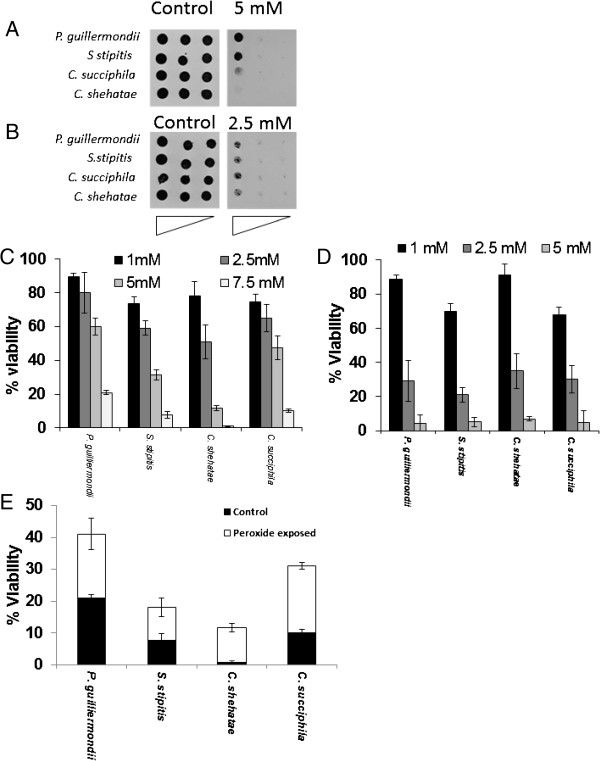Figure 1.
Candida and Pichia spp are sensitive to hydrogen peroxide-induced oxidative stress. (A) Cultures of P. guilliermondii, S. stipitis, C. succiphila, and C. shehatae were grown to stationary phase and the OD600 adjusted to 1.0, 0.1 or 0.01 before strains were spotted onto plates containing various concentrations of hydrogen peroxide. Growth was monitored after 3 days of incubation at 30°C. Results are shown for plates containing no oxidant (YPD) and 5 mM hydrogen peroxide. (B) Growth on restrictive media (YNB) makes yeast more sensitive to oxidative stress. Yeast cultures prepared as above were exposed to hydrogen peroxide and grown on restrictive media (YNB). Results are shown for plates containing no oxidant (YNB) and 2.5 mM hydrogen peroxide. (C) Yeast spp show a reduced ability to survive oxidative stress. Yeast spp were grown to exponential phase in YPD and treated with 1, 2.5, 5 or 7.5 mM hydrogen peroxide for 1 hour. Percent survival is expressed relative to that of untreated cultures. (D) Restrictive growth conditions make yeast more sensitive to oxidative stress. Yeast cultures prepared as above were exposed to hydrogen peroxide in restrictive media (YNB). (E) Exposure to hydrogen peroxide stress makes yeast spp hydrogen peroxide tolerant. Yeast spp were maintained under 0.5 mM hydrogen peroxide stress and exposed to 7.5 mM hydrogen peroxide in YPD and viable counts performed as above.

